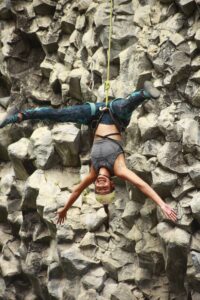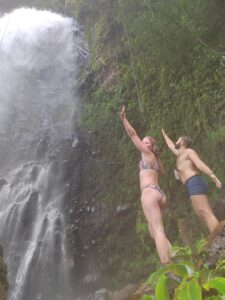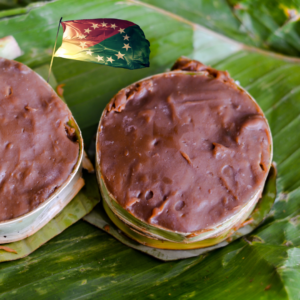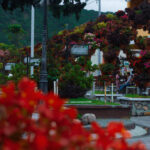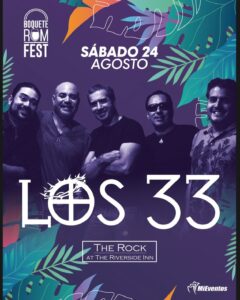
If you’re a young European backpacker looking for a unique travel experience, Panama’s national parks offer a blend of adventure, biodiversity, and ecotourism that you won’t want to miss. With over 18 national parks, each filled with breathtaking landscapes and wildlife, Panama is the perfect destination for nature lovers and eco-conscious travelers.
The Ecological and Economic Importance of National Parks in Panama
Panama’s national parks are more than just protected areas; they are the lifeblood of local ecosystems and economies. These parks play a key role in preserving endangered species, supporting local communities, and driving sustainable tourism. As a traveler, your visit helps support these conservation efforts while providing locals with an alternative source of income through ecotourism.
Ecotourism: The Sustainable Way to Travel
Ecotourism in Panama focuses on low-impact activities that allow visitors to enjoy the country’s natural beauty while minimizing environmental harm. Popular activities include hiking through lush forests, birdwatching, and wildlife observation. By participating in these sustainable activities, you contribute to the protection of these natural treasures while experiencing unforgettable adventures.
Why Choose Ecotourism in Panama?
Panama’s diverse ecosystem makes it an ecotourism hotspot. You can trek through rainforests, explore remote beaches, and spot rare wildlife, all within a relatively small geographic area. For young backpackers, this means less time spent on transportation and more time exploring the outdoors.
Top National Parks to Visit in Panama
Darién National Park: Panama’s Largest and Most Remote Wilderness
Located in the southeast of the country, Darién National Park is Panama’s largest national park and a UNESCO World Heritage Site. It’s a dream for adventurous backpackers looking to explore untouched rainforests and observe wildlife like jaguars, tapirs, and harpy eagles. While the park is remote, its isolation preserves its biodiversity, making it a must-visit for those seeking a raw and authentic experience.
Soberanía National Park: A Birdwatcher’s Paradise
For backpackers interested in birdwatching, Soberanía National Park is a top destination. Located near Panama City, this park is home to the famous Pipeline Road, where you can spot hundreds of bird species in just one day. The park also offers accessible hiking trails and the chance to see monkeys, sloths, and more in their natural habitat.
La Amistad International Park: Shared Natural Wonder
La Amistad International Park is a unique transboundary park that Panama shares with Costa Rica. Backpackers can hike through cloud forests, visit indigenous communities, and explore one of the most biodiverse areas in the world. The park is an excellent destination for those looking to combine cultural experiences with ecological exploration.
Wildlife Encounters in Panama’s National Parks
Panama’s national parks are home to an incredible range of wildlife, from the iconic harpy eagle to the elusive jaguar. Some of the species you might encounter include:
- Harpy Eagle: Panama’s national bird, often spotted in Darién National Park.
- Jaguar: The largest cat in the Americas, found in remote areas like Darién.
- Manatee: A gentle aquatic mammal that inhabits Panama’s coastal areas.
- Tapir: Central America’s largest land mammal, frequently seen in La Amistad Park.
- Bird Species: Including tanagers, parrots, and toucans, especially in Soberanía and other forested parks.
Supporting Local Communities Through Ecotourism
One of the best aspects of ecotourism in Panama is its positive impact on local communities. By visiting national parks, you support jobs for local guides, eco-lodge staff, and artisans. Many communities surrounding these parks offer accommodations, guided tours, and other services tailored to eco-conscious travelers. Whether you’re staying in a community-run guesthouse or enjoying a locally prepared meal, your visit contributes to the well-being of the region.
How to Get the Most Out of Your Visit
Choose Low-Impact Activities
Backpackers can minimize their environmental footprint by choosing low-impact activities such as hiking, wildlife photography, and birdwatching. Panama’s parks are designed to accommodate these activities while preserving the natural environment.
Plan Your Trip Around Key Destinations
While Panama is small, its terrain is diverse. By planning your itinerary around key parks like Darién, Soberanía, and La Amistad, you’ll experience the full range of ecosystems, from rainforests to cloud forests and coastal areas.
The Future of Ecotourism in Panama
Ecotourism in Panama continues to grow as more travelers seek sustainable and meaningful experiences. The government, through the Ministry of Environment (MiAmbiente), is committed to expanding ecotourism into lesser-known regions such as Veraguas and Coclé, providing new opportunities for exploration.
New Ecotourism Destinations
For adventurous backpackers, provinces like Veraguas and Coclé are emerging as new ecotourism hotspots. These regions offer pristine landscapes, diverse wildlife, and opportunities for both adventure and cultural tourism.
Conclusion
Panama’s national parks offer young European backpackers a unique opportunity to explore untouched landscapes, encounter rare wildlife, and support sustainable tourism. By visiting these parks, you’ll not only experience Panama’s natural beauty but also help protect its ecosystems for future generations.
| WebPage URL | Explore Panama’s National Parks |
| Breadcrumbs | |
| Article |
Explore Panama’s National Parks: A Guide for European Backpackers Discover Panama’s rich biodiversity and explore its national parks through ecotourism. This guide helps young European backpackers enjoy Panama’s stunning natural reserves. Published: 2024-09-05 Modified: 2024-09-05 |
| Author | Joe |
| Publisher |
Joe’s Hostel |
| Article Image |
 Beautiful view of Panama’s national parks for eco-conscious backpackers. |
| Keywords | Panama national parks, ecotourism, European backpackers, sustainable travel, wildlife in Panama, low-impact tourism |
| Search Action | Search the site |
